Digital Poster
Dementia: Detection & Prognostication
ISMRM & ISMRT Annual Meeting & Exhibition • 10-15 May 2025 • Honolulu, Hawai'i

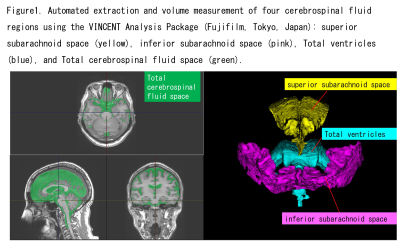 |
Computer Number: 113
3136. DL-Based
Automatic Extraction of CSF Spaces Using 3D-T1WI for DESH
Identification: Comparison with Evans Index and Callosal Angle
T. Sekine, T. Honda, K. Iwata, S. Happo, T. Andoh, S. Kumita
Nippon Medical School, Tokyo, Japan
Impact: Since the proposed automated CSF space volumetry
does not require specific section settings or manual
adjustments, it offers a viable alternative to conventional
indicators for identifying DESH. This approach accelerates
the identification and understanding of iNPH.
|
|
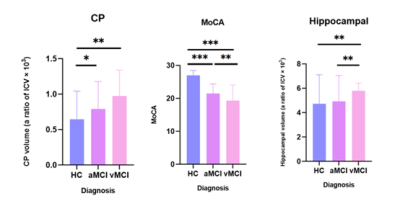 |
Computer Number: 114
3137. MRI
Evaluation of Choroid Plexus Volume Changes in Mild Cognitive
Impairment
Y. Hua, Z. Zhen, Y-C Hsu, W. Chen, C. Liu
Department of Radiology, Southwest Hospital, Third Military Medical University (Army Medical University), Chongqing, China
Impact: Discovering that the choroid plexus volume is
larger in mild cognitive impairment suggests it could be an
MRI marker for early memory issues, aiding in brain disease
research like Alzheimer's and helping develop new
treatments.
|
|
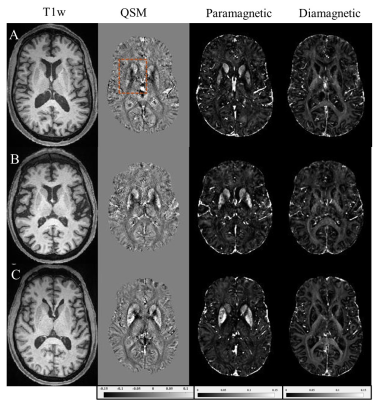 |
Computer Number: 115
3138. Chi-Separation
Detects Focal Changes in Cortical Paramagnetism Associated with
Behavioral Variant Frontotemporal Dementia
S. Pandey, H. Radhakrishnan, C. A. Olm, P. A. Cook, C.
McMillian, D. J. Irwin, M. D. Tisdall
Perelman School of Medicine at the University of Pennsylvania, Philadelphia, United States
Impact: We show that chi-separations maps can be used to
detect syndrome-specific paramagnetic cortical changes,
demonstrating its ability to quantify the distribution of
iron-rich gliosis in vivo in FTLD, which has previously only
been reliably visualized postmortem.
|
|
 |
Computer Number: 116
3139. Correlation
Study between Cognitive Impairment and Bone Marrow fat fraction
in Cranial and Lumbar Vertebrae fat fraction
Y. Wen, M. Tang, X. Yan, L. Li, X. Lei, X. Zhang
Shaanxi Provincial People's Hospital, xi an, China
Impact: The quantitative fat fraction of bone marrow in
the cranium and vertebrae is associated with cognitive
impairment.,This may provide a signature research direction
for the bone-brain axis.
|
|
 |
Computer Number: 117
3140. Elevated
regional cerebral oxygen extraction fraction was associated with
worse cognitive performance in older adults with vascular risks
J. Song, W. Shi, J. Suconic, K. Hazel, G. Pottanat, E.
Jones, C. Xu, K. Oishi, Y. Gou, P. Rosenberg, R. Kalyani, A.
Moghekar, S. Yasar, D. Lin, M. Albert, H. Lu, D. Jiang
Johns Hopkins University School of Medicine, Baltimore, United States
Impact: This research suggests that OEF may serve as an
early biomarker for cognitive impairment due to vascular
disease, particularly impacting executive function, which
could improve early intervention strategies and monitoring
of vascular cognitive impairment.
|
|
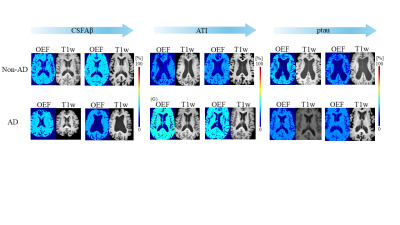 |
Computer Number: 118
3141. Oxygen
extraction fraction is differently associated with pathological
biomarkers in Alzheimer’s Disease and non-Alzheimer’s dementias
A. Misra, Y. Wang, G. Chiang, J. Cho
State University of New York at Buffalo, Buffalo, United States
Impact:
This study showed distinct OEF relationships with pathological biomarkers between AD and non-AD dementia, using a new technique, QQ. QQ-based OEF can reveal different roles of oxygen metabolism in various types of dementia, enabling tailored treatment strategies. |
|
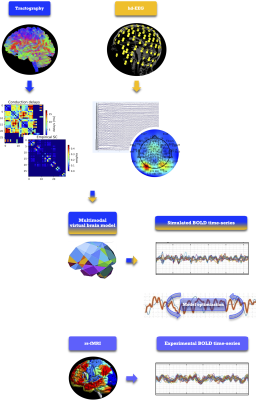 |
Computer Number: 119
3142. Multimodal
virtual brain: when hd-EEG drives simulations of brain dynamics
closer to patients’ reality
A. Monteverdi, G. Calia, A. Augello, P. Grasso, A.
Castelnovo, M. Cotta Ramusino, F. Conca, C. Totaro, E.
Capriglia, M. Terzaghi, L. Farina, A. Costa, A. Pichiecchio,
S. Cappa, C. Gandini Wheeler-Kingshott, F. Palesi, E.
D'Angelo
IRCCS Mondino Foundation, Pavia, Italy
Impact:
With its capacity to perform simulations closer to reality, this new model opens new prospectives in the use of virtual brains as digital representations of patients, a crucial tool for the development of personalized interventions. |
|
 |
Computer Number: 120
3143. Prognostic
value of brain diffusion tensor imaging in comatose after
cardiac arrest
X. Jia, C. Zhang, X. Jia, Q. Yang
Beijing Chaoyang Hospital, Capital Medical University, Beijing, China
Impact: These findings emphasize the role of white
matter integrity in disease recovery in cardiac arrest
patients. Suggesting that we can explore the
pathophysiologic mechanisms of white matter injury and its
potential as a therapeutic target in the future.
|
|
 |
Computer Number: 121
3144. Neurochemical
changes in presymptomatic C9orf72-HRE frontotemporal lobar
degeneration: a 7T magnetic resonance spectroscopy study
F. Prinse, L. van der Weerd, I. Ronen, H. Seelaar, J. van
Swieten, C. Najac, E. Dopper
Erasmus Medical Center, Rotterdam, Netherlands
Impact: This is the first study to use 7T MRS in
presymptomatic carriers of the C9orf72-repeat expansion. We
found decreased N-acetyl-aspartate/total creatine ratio,
suggesting neuronal viability loss before symptom onset,
whereas we found no signs of presymptomatic
neuroinflammation.
|
|
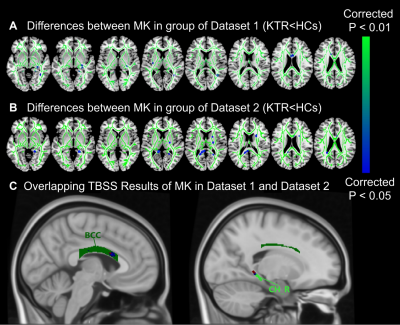 |
Computer Number: 122
3145. Brain
white matter microstructure as a predictor of fatigue
progression in kidney transplant recipients
X. Zhu, J. Mu, Y. Zhang, J. Tian, X. Wang, C. Li, R. Gou, Y.
Gou, Y. Liu, B. Chen, J. He
The First Affiliated Hospital of Xi’an Jiaotong University, Xi'an, China
Impact: This study suggests that WM complexity may be a
biomarker for fatigue progression in KTRs, potentially
linking renal function to neuropsychiatric symptoms. These
findings offer insights into mechanisms underlying fatigue
in KTRs and point to possible therapeutic targets.
|
|
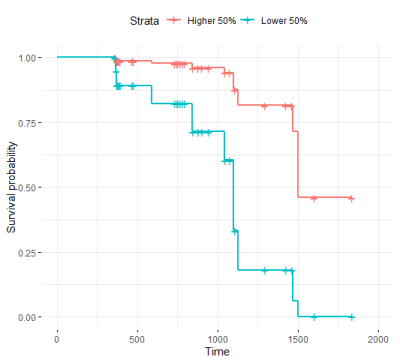 |
Computer Number: 123
3146. Prediction
of Conversion from Mild Cognitive Impairment to Dementia using
Multi-shell Diffusion MRI
A. Ulug, R. Watts, R. Haxton
Cortechs Labs, Inc., San Diego, United States
Impact: Diffusion imaging derived biomarkers that can
predict MCI to AD conversion will be useful to stratify
patients to start recently approved Alzheimer's drugs early
in their disease progression. This may improve better
patient outcome.
|
|
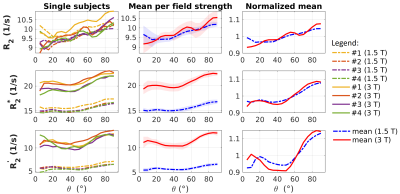 |
Computer Number: 124
3147. Anisotropy
and Field Strength Dependence of Relaxation Rates in Single and
Crossing Fiber White Matter
M. Bauer, C. Kremser, E. Gizewski, C. Lenz, C. Birkl
Medical University of Innsbruck, Innsbruck, Austria
Impact: This study deepens our understanding of fiber
orientation and field strength effects on relaxation rates
in brain white matter, providing essential insights into
underlying mechanisms leading to relaxation anisotropy. This
will enable more detailed analyses of complex fiber
structures.
|
|
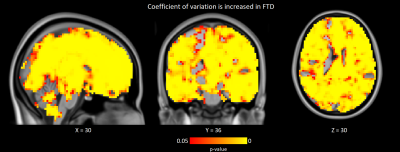 |
Computer Number: 125
3148. Fast
fMRI Signal Variations Reveal Widespread Changes in
Frontotemporal Dementia
V. Korhonen, J. Kananen, M. Järvelä, N. Huotari, J. Krüger,
V. Kiviniemi
Oulu University Hospital, Oulu, Finland
Impact: Findings suggest that ultrafast fMRI can detect
glymphatic dysfunction in FTD, offering new insights into
disease mechanisms. This approach may lead to novel
diagnostic biomarkers and guide therapeutic strategies
targeting glymphatic impairment, improving early detection
and intervention for neurodegenerative diseases.
|
|
 |
Computer Number: 126
3149. Dual
decline in cognition and gait speed is associated with lower
myelin content across age
Z. Gong, J. Bae, N. Fox, N. Zhang, A. Guo, A. De Rouen, Q.
Tian, L. Ferrucci, M. Bouhrara
National Institute on Aging, Baltimore, United States
Impact: This research reveals distinct myelin content
levels by decline type, suggesting that tracking cognitive
and gait decline may cost-effectively monitor brain health.
It highlights myelination’s role in brain aging, where its
degeneration may drive both declines and increased dementia
risk.
|
|
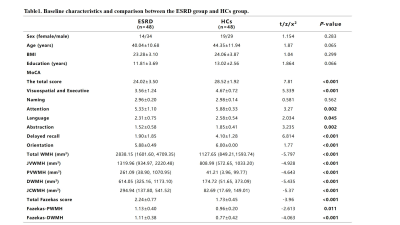 |
Computer Number: 127
3150. Quantitative
Analysis of White Matter Hyperintensities and Their Association
with Cognitive Impairment in End-Stage Renal Disease Patients
Q. Zhu, J. Mu, S. Ma, R. Zhang, H. Yuan, Z. Han, M. Zhang,
Y. Liu
Xi'an Jiaotong University, Xi'An, China
Impact: This
study suggested that JVWMH
volume may serve as a potential marker for cognitive decline
in ESRD patients.These findings may offer valuable insights
for developing targeted interventions and encourage further
research into the neurovascular mechanisms underlying
cognitive impairment in renal disease.
|
|
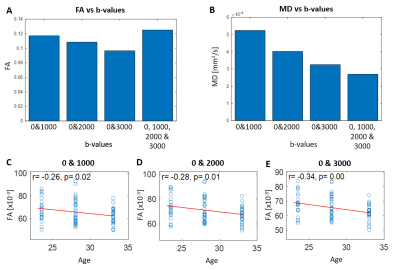 |
Computer Number: 128
3151. Age-related
decline in diffusion anisotropy of subarachnoid space using
higher b-values
Y. Jung, S-H Park
Korea Advanced Institute of Science and Technology, Daejeon, Korea, Republic of
Impact: The age-related decline in diffusion anisotropy
of subarachnoid space was stronger using higher b-values.
This suggests that age-related decline in diffusion
anisotropy may be influenced by the tissue microstructure in
subarachnoid space.
|
The International Society for Magnetic Resonance in Medicine is accredited by the Accreditation Council for Continuing Medical Education to provide continuing medical education for physicians.